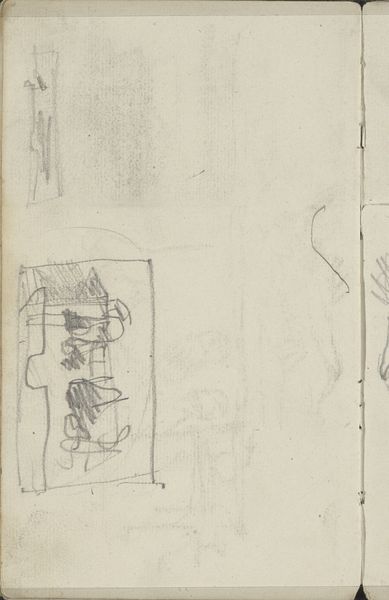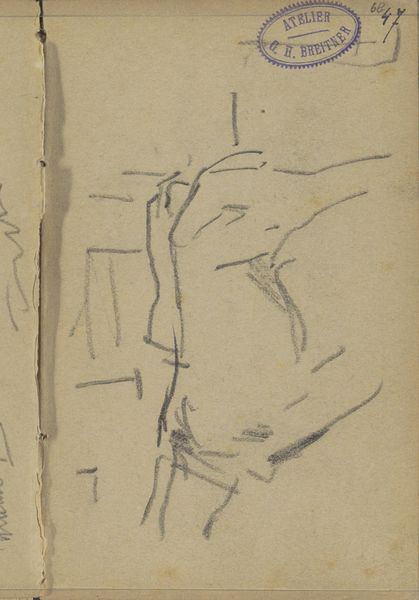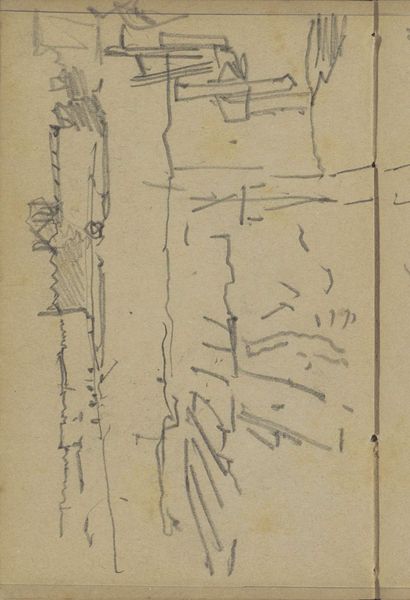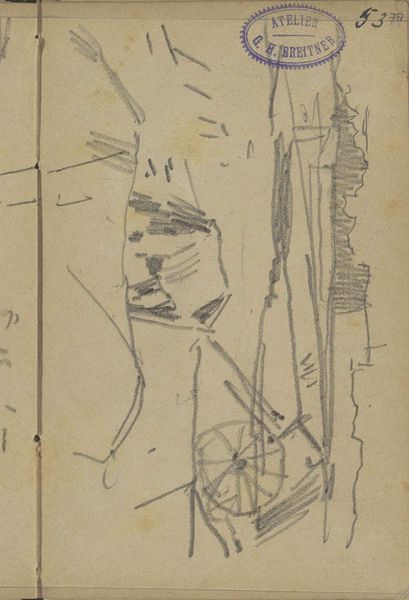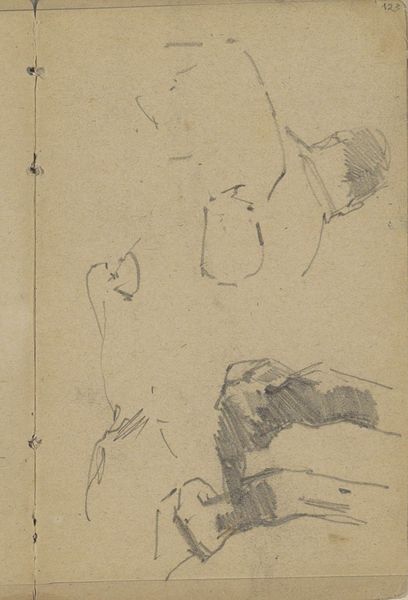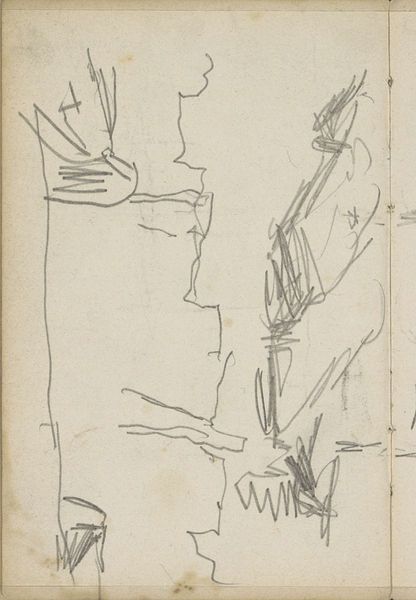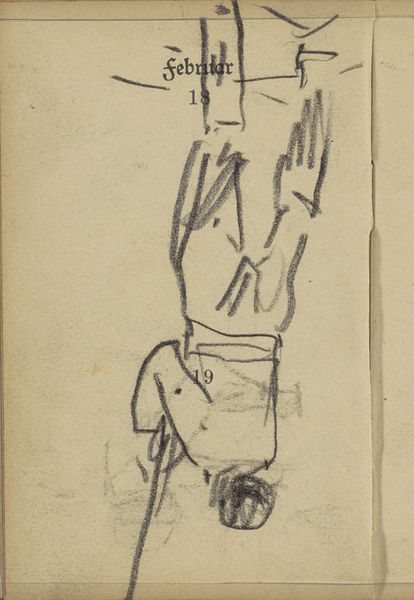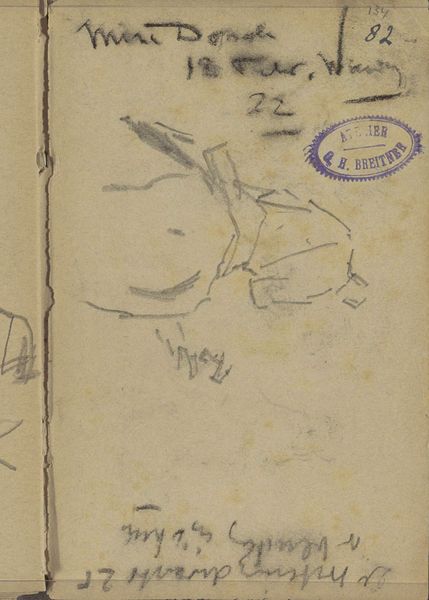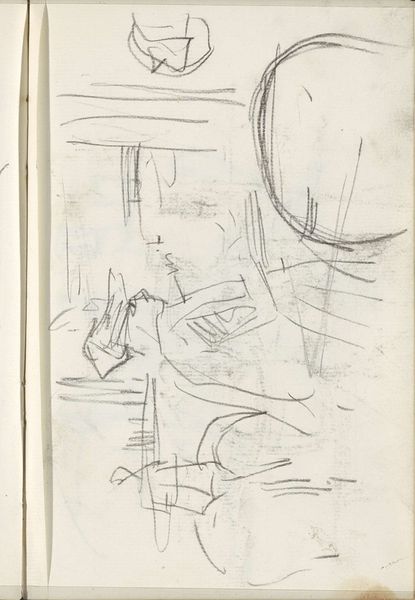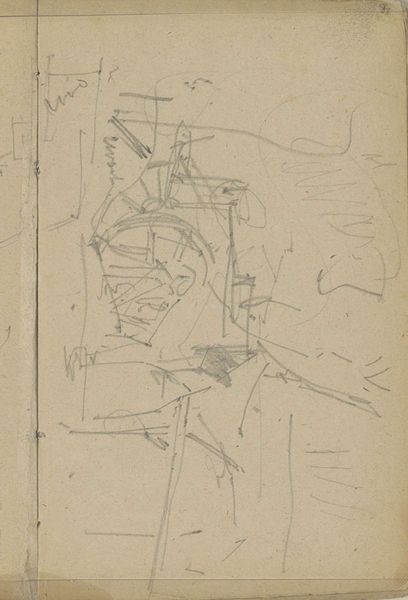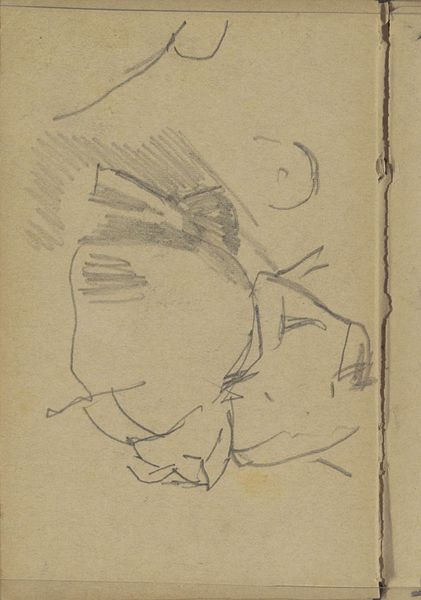
drawing, paper, pencil
#
portrait
#
drawing
#
aged paper
#
toned paper
#
quirky sketch
#
impressionism
#
sketch book
#
incomplete sketchy
#
figuration
#
paper
#
personal sketchbook
#
idea generation sketch
#
sketchwork
#
pencil
#
sketchbook drawing
#
sketchbook art
#
profile
Copyright: Rijks Museum: Open Domain
Editor: This drawing, "Standing Figure and a Man's Head" by George Hendrik Breitner, dates from the early 1880s and is rendered in pencil on paper. It feels like a glimpse into the artist’s mind, all these different, not fully formed, ideas. What do you see in this work? Curator: Well, I see more than just a casual sketch; I see Breitner grappling with representation itself. During the 1880s, rapid industrialization transformed Amsterdam, creating stark class divisions and social inequalities. Does this seemingly simple sketch, with its unfinished quality, perhaps reflect a deeper unease, a critique of traditional portraiture and its power dynamics? How does this relate, do you think, to similar issues in contemporary society? Editor: That's a really interesting angle! I hadn't thought about it that way. I was more focused on the artist's process and the sketchiness. I was wondering, what might be the role of art in reflecting the impact of class on individuals in society, especially during times of social transition? Curator: Exactly. Breitner's association with the "Amsterdam Impressionism" movement points to a desire to depict everyday life, but it’s crucial to examine *whose* everyday life is being depicted and *how*. Is he simply documenting, or is he also subtly critiquing the social fabric that produces such fragmented, transient experiences? Remember, observation is never neutral, and the artist always chooses which narrative gets privileged, as reflected by art depicting labor exploitation. Editor: So, even in what appears to be a preliminary sketch, Breitner might be subtly engaging with social and political issues of his time. It kind of makes me see art and its purpose in a different way, because the idea generation stage may convey something, too. Curator: Precisely! The "unfinishedness" could be a deliberate choice to resist the idealized portrayals favored by the establishment, opting instead for a raw, unvarnished look at humanity and possibly offering an opportunity for those depicted. Consider art that celebrates individuality or exposes inequalities, and tell us how these pieces can empower individuals and advocate for policy change?
Comments
No comments
Be the first to comment and join the conversation on the ultimate creative platform.
